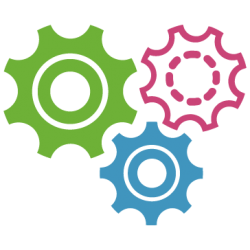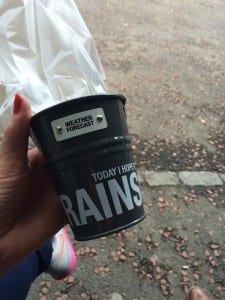A post from Lisa Pattoni, the head of the innovation and improvement programme at IRISS. Here Lisa reflects on the development of a new place-based project at IRISS and the journey of ‘walking the talk’ to ensure that our process fits with our aspirations.
At IRISS, we’re excited to be developing a new project designed to support more effective collaboration between those living and working in communities. However, at this stage, we don’t have a name for the project, a specific theme, or a partner. This is because we are hoping to collaboratively design this shared piece of work. We want to make sure that the collaborative approach is modelled throughout the project from the very start to the end.
This is new way of working for us (although, we’re pretty sure that others have done this type of work before), We’re usually able to choose a partner based on best fit with the theme that we’ve predetermined. Working from that point in is quite easy! Instead, this project is about genuinely building the work from the bottom up – which means no predetermined theme or topic – just responding to local needs and issues. It’s also new because we are hoping to work across different agents within the system – taking a ‘deep dive’ approach – to see what change we can actually make together over a longer period of time.
The trouble with this is being open enough to engage people’s curiosity about the work, but not being too vague as to put people off! And, we’ve found that the balance between being clear/easy to understand, and being open/not predetermined, is hard (really hard) to do.
Here are some of our reflections based on the learning so far.
Sense-checking
As a first step, we put together some text. We agonised over this internally, trying to make sure that there was enough of a ‘hook’ to show people that we are serious and committed to the work, but also giving enough space to enable people to see how this could link in with local priorities.
We decided to ask a group of critical friends for feedback. And thank goodness for that! This feedback was both fascinating and invaluable. We received comments ranging from ‘you need to be more specific’, to ‘people will want to know more before they engage’ and ‘isn’t this best teased out in conversation, rather than an application process?’
In our view, the perceptions from the group we’d engaged with represented a spectrum of attitudes towards project management, tolerance of risk and comfort with uncertainty. Many of these attitudes had been represented within IRISS too.
Specificity
In part, due to the fact that we were unable to be specific about the substance (topic) of the work, we ended up being too specific about our own ideas for how the work might pan out. We hoped that this might give the audience something to hook into, so that they’d know we were committed and that we had lots of ideas.
To some extent we were conscious that because we’re not offering any additional funding for this work, that we’d need to sell ourselves! However, it had the opposite effect.
Unfortunately, feedback suggested that this actually read as ‘us’ and ‘them’ rather than being the explicit message that we’d hoped to impart about it being a collective ‘we’ relationship. It meant that many were left asking themselves questions around the extent to which the work is something we were inviting people to participate in, or if our ambition was to co-design the whole thing e.g. is it ‘your’ programme or is it ‘our’ programme.
Process
We had lots of ideas about activities we might undertake with partners, but not so many about the process of choosing a partner. One of our critical friends rightly highlighted that our original process straddled two paradigms – a competition based paradigm where partners would bid to work with us and we’d decide who fit the criteria; and a contrasting paradigm that tries to support shared ownership. Feedback highlighted that by selecting a partner in the process (as was described) could be considered to be reinforcing an ‘expert’ power dynamic.
This was quite difficult for us to hear because this ‘expert’ notion is one of the very things we want to challenge! As an organisation we were really keen to go down the second route, but we weren’t sure how, or what it would be like to give up the single power of decision making (this is something we hope to reflect on throughout the project process).
We are still not 100% sure, but are willing to give it a try and have adapted our model to try some collaborative decision making out. This is new and risky for us… but also very exciting. We’re clear that this doesn’t mean giving away all of the power, but that we all have a stake in the decision making, because it is shared.
Overall…
We’ve been lucky enough to be supported by people who have experience in this type of work. Their top tips included:
- it’s more important to get people intrigued and curious, than give the impression that everything is sorted out
- try to be specific about what you want to get out of the project, so that the ambitions of the work are clear from the outset
- In systems approaches, the starting point matters as a way of modelling the principles you are working to, and so be careful of the tone of your starting point

